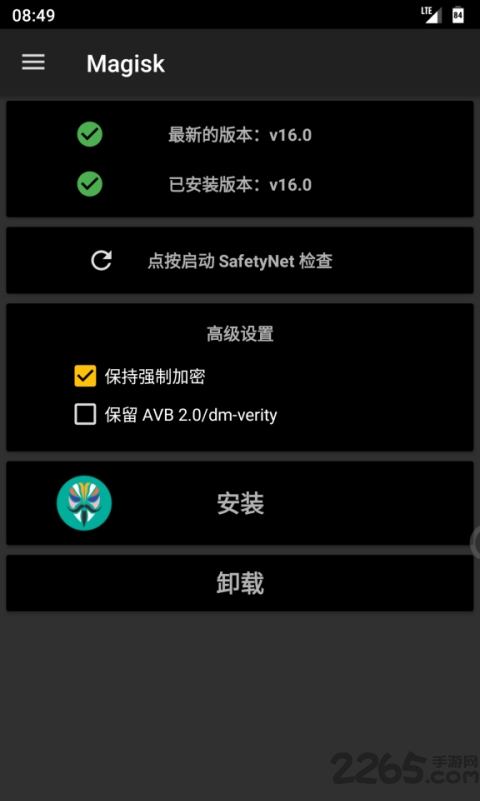面具root是一款功能强大的手机一键ROOT工具,软件拥有超强ROOT技术,可以帮助用户对手机进行一键ROOT,让用户可以卸载手机中的预装软件,或是在手机中使用一些需要ROOT权限的APP。KK下载站为您提供面具root 安卓免费版下载,需要手机一键ROOT工具的朋友可以下载使用哦!

1.卸载Xposed及Xposed Installer,具体可以见XDA。
2.卸载SuperSU,具体可以见XDA。
3.恢复boot.img,因为之前刷入的SuperSU已经改动了boot.img。所以需要你下载原始ROM,提取其中的boot.img并通过fastboot刷入,使其复原。
4.刷入Magisk,具体可以见XDA。
5.刷入Systemless Xposed SDK,具体可以见XDA。
6.安装Magisk Manager
7.安装Systemless Xposed Installer
【预装卸载】Root后必备功能,删除无用自带APP,内存再也不告急
【预装恢复】轻松恢复预装软件,误删预装无压力
【高成功率】全新杀器能力爆表,大幅提升成功率
【核心防护】Root核心防御引擎,方便安全又
【自启管理】自启软件,一手把握,个性定制,内存加倍
【权限管理】Root后软件授权,弹指解决,危险授权,提前预警
【一键Root】一键Root,方便快捷,获取权限,不在繁琐
- 超级用户访问日志记录
- 超级用户访问权限的通知
- 每应用程序通知配置
- 临时unroot
- 深部过程检测(没有更多的未知)
- 超级用户访问权限提示
- 工程在恢复(没有更多的段错误)
- 工作时的Android无法正常启动
- 工程与非标准壳位置
- 始终在幽灵模式下运行
- 主题选择从4个选项
